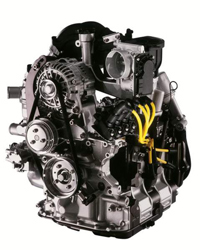B1177 Engine Trouble Code
Meaning of B1177 engine trouble code is a kind of body trouble code and when your car's 'B1177 Check Engine' light comes on, it's usually accompanied by a sinking feeling in the pit of your stomach. The light could mean a costly problem, like a bad catalytic converter, or it could be something minor, like a loose gas cap. But in many cases, it means at minimum that you'll be visiting the car dealer to locate the malfunction and get the light turned off.
B1177 Fault Symptoms :
|
If one of these reasons for B1177 code is occuring now you should check B1177 repair processes.
Now don't ask yourself; What should you do with B1177 code ? The solution is here : |
B1177 Possible Solution:

|
Power Steering Pressure (PSP) Switch Malfunction In Key On, Engine Off Self-Test, this DTC indicates the PSP input to the PCM is high. In Key On, Engine Running Self-Test, this DTC indicates that the PSP input did not change state. Steering wheel must be turned during Key On, Engine Running Self-Test PSP switch/shorting bar damaged SIG RTN circuit open PSP circuit open or shorted to SIGRTN PCM damaged. |
B1177 Code Meaning :
| B | 1 | 1 | 7 | 7 |
|---|---|---|---|---|
| OBD-II Diagnostic Body (B) Trouble Code For Engine | Fuel And Air Metering | Fuel Rail/System Pressure - Too High | Cylinder 10 Contribution/balance Fault | Shift/Timing Solenoid Malfunction/ 3-2 Shift Solenoid Circuit Electrical |
Is the fuel pump sometimes not priming when you turn the key to ON(II)? Start by measuring the fuel pressure and checking whether you have bright white-bluish spark at all four plugs. The mechanical timing is also something that you should check, as we mentioned above.
B1177 OBD-II Diagnostic Body (B) Trouble Code DescriptionB1177 engine trouble code is about Shift/Timing Solenoid Malfunction/ 3-2 Shift Solenoid Circuit Electrical.Main reason For B1177 CodeThe reason of B1177 OBD-II Engine Trouble Code is Fuel Rail/System Pressure - Too High. |
B1177 code on vehicles with electronically controlled automatic transmissions, the 3-4 shift solenoid is responsible for actuating the hydraulic circuits to activate clutches or bands that change gears inside the automatic transmission.

